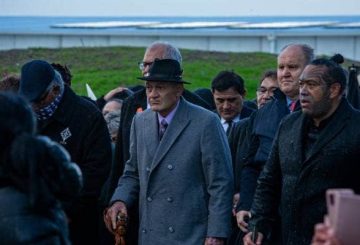과거 영국 식민지였던 호주와 뉴질랜드는 원주민 인구에 대해 매우 다른 역사를 가지고 있습니다.
오클랜드의 한 미술관은 뉴질랜드 사상 최대 규모의 원주민 및 토레스 해협 섬 주민 예술 컬렉션을 전시했습니다.버논 아 키 (Vernon Ah Kee) 의 작품 “If I Was White”는 호주 원주민이 직면한 어려움을 보여줍니다.
호주는 원주민과 토레스 해협 섬 주민을 호주 최초의 주민으로 인정하고 그들에게 정치 기반을 제공하는 헌법 개정인 ‘보이스’에 투표할 예정입니다.하지만 여론 조사에 따르면 실패할 수도 있습니다.이는 원주민 마오리족이 1840년 와이탕기 조약에 의해 보호받는 권리를 갖고 있다는 뉴질랜드의 많은 사람들을 놀라게 한다. 비록 이 조약이 1970년대까지 완전히 지켜지지 않았음에도 불구하고 말이다.
두 나라는 다음과 같은 주요 차이점이 있습니다.
- 인구: 호주의 인구는 2,600만 명이며 호주 원주민은 3.5% 를 차지합니다.뉴질랜드의 인구는 5백만 명이며, 마오리족은 16.5% 를 차지합니다
- 문화: 뉴질랜드에서는 마오리 문화와 언어를 잘 이해하고 있습니다.호주에는 150개 이상의 고유한 토착 언어가 있으며 대부분이 멸종 위기에 처해
- 정부: 호주는 국가의 책임이 있는 연방입니다.뉴질랜드 중앙 정부가 대부분의 권한을 가지고 있습니다.
.
있습니다.
1867년부터 뉴질랜드의 마오리인들은 의회에서 특별한 의석을 차지했습니다.호주에서는 영국 왕실이 원주민과 협상하거나 원주민을 주권자로 인정하지 않았습니다.이러한 차이는 식민지가 건설되면서부터 시작되었습니다.
뉴질랜드는 1970년대부터 와이탕기 조약을 통해 식민지 시대의 잘못을 바로잡기 위해 노력해 왔지만, 호주는 이제서야 원주민 대표제를 위한 구조에 대해 논의하고 있습니다.
많은 호주인들은 자국이 원주민을 대했던 역사를 제대로 알지 못합니다.여기에는 아동 강제 퇴거 및 현재 불이익을 초래한 정책이 포함됩니다.마오리족과 함께한 뉴질랜드의 역사는 좀 더 개방적이라고 여겨진다.
요약하자면, 두 나라는 비슷한 점이 있지만 원주민 인구에 대해서는 서로 다른 길을 택했습니다.이는 그들의 오늘날의 정치와 사회적 태도를 반영합니다
.





























































